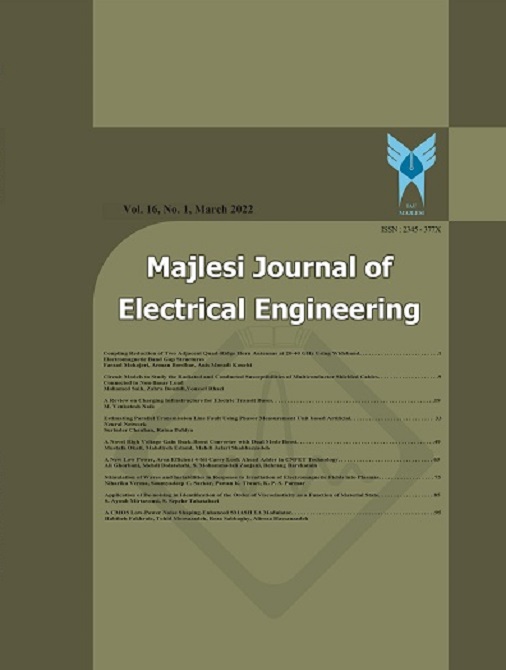[1] H. Jiang, T.H. Nguyen, M. Prud’homme, “Optimal control of induction heating for semi-solid aluminum alloy forming”, Elsevier, Journal of Materials Processing Technology, vol. 189, pp. 182–191, 2007.
[2] M. Kranjc, A. Zupanic, D. Miklavcic, T. Jarm,“Numerical analysis and thermographic investigation of induction heating”, Elsivier, International Journal of Heat and Mass Transfer 53 3585–3591, 2010.
[3] F.P. Dawson, and P. Jain, “A comparison of load commutated inverter systems for induction heating and melting applications”, IEEE Trans. On Power Electronics, Vol. 6, No. 3, pp. 430 -441, July, 1991.
[4] M. Horii, N. Takahashi and T. Narita, “Investigation of Evolution Strategy and Optimization of Induction Heating Model”, IEEE Trans. on Mag. vol. 36, no. 4, pp. 1085-1088, Jul. 2000.
[5] W. S. Choi, I. Ju Pa, D. Yun Lee and D. S. Hyun, “A New Power Control Scheme of Class-D Inverter for Induction Heating Jar Application with Constant Switching Frequency”, Conf. IEEE Indus. Electron. Pp. 784-789, Soc. Nov. 2 - 6, Buean, Korea, 2004.
[6] Y. Favennec , V. Labb_e, F. Bay, “Induction heating processes optimization a general optimal control approach”, Elsevier, Journal of Computational Physics, vol. 187, pp. 68–94, 2003.
[7] J. Lee, S. Lim, K. Nam, D. Choi ,“An Optimal Selection of Induction Heater Capacitance Considering Dissipation Loss Caused by ESR”, IEEE Trans. Ind. Appl., vol. 43, no. 4, pp. 1117 – 1125, 2007.
[8] Krishnanand K.R, B.K.Panigrahi, Santanu Kumar Nayak, P.K.Rout, “Comparative Study of Five Bio-Inspired Evolutionary Optimization Techniques”, Conf. IEEE, NaBIC, pp. 1231-1236, 2009.
[9] G. R. Arab Markadeh, E. Daryabeigi, “An optimal selection of induction heating capacitance by genetic algorithm considering dissipation loss caused by esr”, IJE Transactions B: Applications, March 11, 2010.
[10] K.M. Passino, “Biomimicry of bacterial foraging for distributed optimization and control, IEEE Control Systems Magazine”, pp.52– 67, 2002.
[11] E. Daryabeigi, M. Moazzami , A. Khodabakhshian, M. H. Mazidi, “a new power system stabilizer design by using smart bacteria foraging algorithm”, IEEE. Conf. CCECE, pp. 713-716, Niagara, Canada, 2011.
[12] Mishra, S. “A hybrid least square-fuzzy bacterial foraging strategy for harmonic estimation”. IEEE Trans. on Evolutionary Computation, vol. 9(1): 61-73, 2005.
[13] S. Mishra, and C. N. Bhende, “Bacterial Foraging Technique-Based Optimized Active Power Filter for Load Compensation”, IEEE Trans. on POWER DELIVERY, vol. 22, no. 1, pp.457-465, Jan. 2007.
[14] W. J. Tang, M. S. Li, Q. H. Wu, and J. R. Saunders, “Bacterial Foraging Algorithm for Optimal Power Flow in Dynamic Environments”, IEEE, Trans. on Circuits and Sys.—I: REGULAR PAPERS, vol. 55, no. 8, Sep. pp.2433-2442, 2008.

